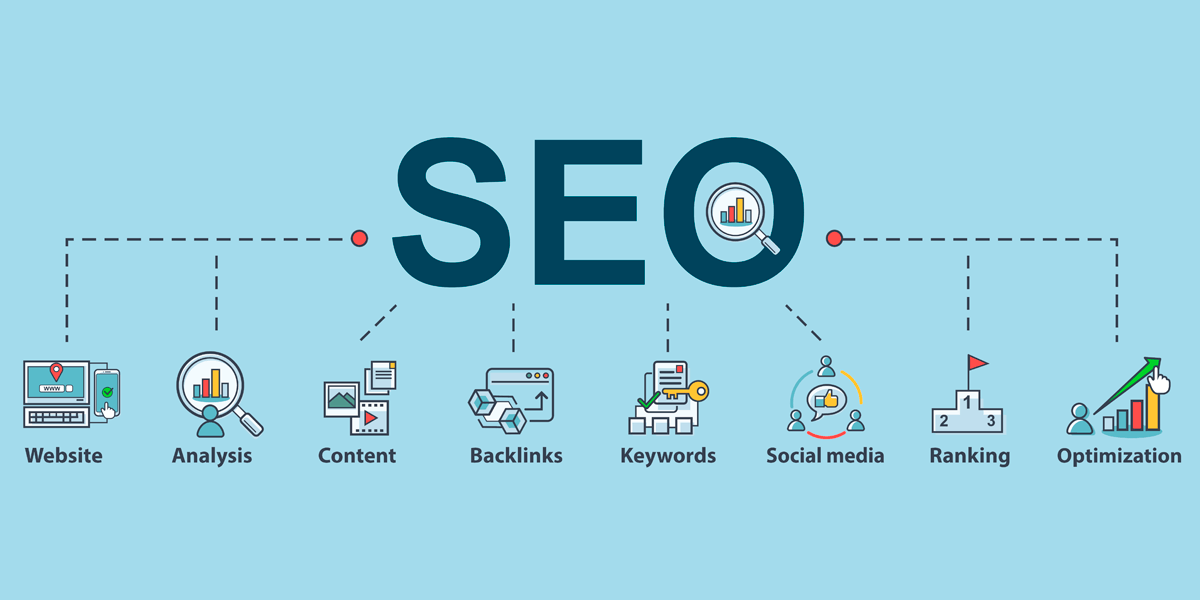- Published on
What is SEO?
- Authors

- Name
- Vaut
- @V_aut_

What is SEO?
Search engine optimization (SEO) is the art of crafting information to increase its likelihood of being displayed prominently by search engines. Google, YouTube and Amazon's search function are the world's three most utilized search engines. Ranking well amongst search results on these platforms can grant a business the defining visibility to make or break it.
SEO involves a range of strategies and techniques aimed at boosting a website's visibility by enhancing its position (aka rank) in search engine results pages. It requires an understanding of search engine algorithms, keyword research and a dynamic approach of continuous adaptation to the evolving landscapes of internet marketing and technology.
As a vital part of digital marketing, savvy marketers leverage their knowledge of search algorithms to ensure their projects gain prominence.
The Three Pillars of SEO
Website Speed
Google prioritizes delivering a swift and dependable browsing experience to its users. The technical foundation of your website significantly influences its visibility in search rankings; a robust and efficient tech stack ensures a faster, more responsive site that Google is more likely to favor. The speed of your website not only enhances user experience but also plays a crucial role in search engine rankings. A faster website encourages longer visits, reduces bounce rates, and signals to search engines that your site is reliable and efficient, making it a preferred choice in search results.
Content
In the realm of SEO, content reigns supreme. Google's goal is to provide users with comprehensive, high-quality content that precisely matches their search queries. This involves not just the creation of comprehensive material but also the strategic use of keywords, maintaining an optimal keyword density to ensure relevance without overstuffing. Moreover, incorporating LSI (Latent Semantic Indexing) helps search engines grasp the context of your content, recognizing synonyms and related terms, thereby improving your content's visibility and relevance. Search engines assess a website's authority on a topic by examining how thoroughly it covers the topic and related subtopics. A website that effectively organizes its content, creating a well-structured topical map with interlinked subtopics, asserts its authority and demonstrates its value to users. This comprehensive approach not only satisfies user intent but also positions the website as a reputable resource, thereby increasing its visibility and ranking in search engine results.
Backlinks
Backlinks serve as a testament to a website's credibility and authority in its niche. These links, coming from third-party websites, act as endorsements in the eyes of search engines like Google. The principle is simple yet powerful: when a trusted site links to yours, it passes on some of its trustworthiness to you. This transitive property of trust makes backlinks a critical factor in SEO. By securing backlinks from reputable and relevant sources, you signal to search engines that your content is valuable and trustworthy, thereby boosting your site's visibility and ranking in search engine results.

The Role of Keywords in SEO
At the heart of effective SEO lies meticulous keyword optimization. Without keywords, there is no SEO. These are the signposts that guide users from the queries they type into search boxes to the relevant and insightful content that meets their needs. Hence, businesses must not only identify their main keywords but seamlessly weave them throughout their digital content, from headers and titles to meta descriptions and anchor texts.
Crafting Optimized Headers
Crafting headers that encapsulate the essence of your content while simultaneously appealing to search engines is an art in itself. An optimized header is not just a beacon for the reader, but a signal to search engines that a particular page is relevant to certain queries. Understanding and leveraging this mechanism is vital for ensuring that quality content reaches its intended audience.
Enhancing Readability for User and Search Engine
Enhanced readability is not only a user-centric approach but a necessary criterion for search engine algorithms as well. Readable content—which includes the usage of short paragraphs, clear structure, bullet points, and appropriate headers—ensures that user experience is not compromised. This translates directly into longer site engagements and potentially higher search result rankings.
Preparing for the Future of SEO
As the SEO landscape evolves, staying ahead of the curve means embracing AI while maintaining quality and strategic oversight. For those interested in tapping into the full potential of SEO automation and learning about the most effective practices, reading more about effective automation on Vaut is an excellent starting point.
By grasping the capabilities and limitations of SEO automation, marketers can better navigate the balance between automated efficiency and human ingenuity. The future of SEO will likely see a more profound integration of these tools, making an understanding of their application essential for anyone looking to thrive in digital marketing.
FAQs:
1. How do I use SEO on my website?
To implement SEO on your website, you can follow these foundational steps:
- Keyword Research: Identify relevant keywords that your target audience is searching for. Tools like Google Keyword Planner can help you find keywords related to your business or content.
- Content Creation: Create high-quality, relevant content that incorporates your target keywords naturally. Your content should provide value to your readers and address their search intent.
- On-Page Optimization: Optimize your web pages by ensuring that titles, headings, URLs, and meta descriptions are structured well and include your target keywords.
- Technical SEO: Ensure that your website is technically sound by improving site speed, ensuring mobile-friendliness, and setting up proper site architecture to make it easily crawlable for search engines.
- Backlinks: Build high-quality backlinks from reputable websites. Backlinks are a signal of trust to search engines and can significantly improve your site's authority and rankings.
- Monitor Performance: Use tools like Google Analytics and Google Search Console to track your website's performance, monitor traffic, and understand how users interact with your site.
2. What is an example of SEO?
An example of SEO in action would be a food blog that wants to increase its visibility for the search term "healthy vegetarian recipes." It could identify related keywords like "easy vegetarian recipes" or "low-calorie vegetarian meals." Write comprehensive blog posts featuring healthy vegetarian recipes, ensuring that the content is informative, well-written, and includes the targeted keywords naturally. Optimize titles, headings, and meta descriptions to include the primary keyword and variations, making the content more relevant and attractive to search engines. Improve the website's loading speed and ensure it's mobile-friendly to provide a good user experience, which is a significant ranking factor. Acquire backlinks from reputable food blogs or health websites to increase the site's authority and trustworthiness in the eyes of search engines.
By following these steps, the food blog increases its chances of ranking higher for the targeted keywords, attracting more organic traffic, and meeting its SEO goals.
3. How is AI revolutionizing SEO?
Funny you might ask! Read more rise of AI powered SEO here.